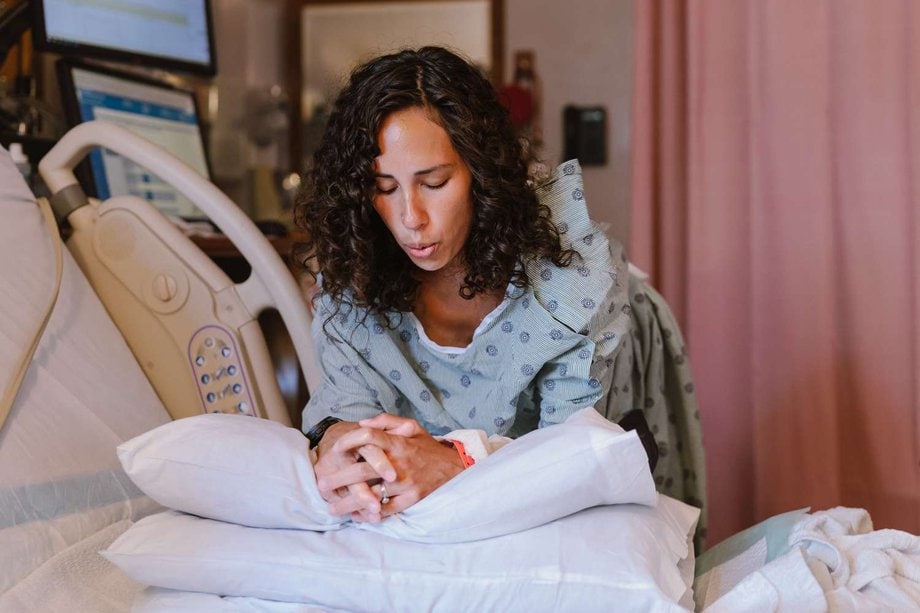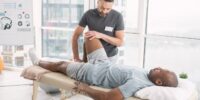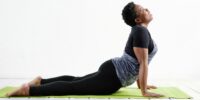How to Manage Pain During Pregnancy and Childbirth

Pain management during pregnancy and childbirth is a topic of significant importance and interest for expectant mothers. This article aims to provide an overview of various techniques and strategies for effectively managing pain during this crucial period.
By exploring the causes of pain during pregnancy and childbirth, as well as natural and medication-based pain management options, readers will gain a comprehensive understanding of available approaches.
Additionally, the role of breathing exercises, physical therapy, supportive measures, and coping strategies will be examined to provide a holistic perspective on pain relief during this transformative experience.
Key Takeaways
- Physiological changes and hormonal fluctuations are common causes of pain during pregnancy and childbirth.
- Natural pain management techniques such as breathing exercises, positioning for pain relief, and massage techniques can help alleviate discomfort.
- Non-medication alternatives like pregnancy yoga and acupuncture offer safe and effective pain relief options.
- Supportive measures, coping strategies, and emotional support play a crucial role in managing pain during pregnancy and childbirth.
Understanding the Causes of Pain During Pregnancy and Childbirth
The causes of pain during pregnancy and childbirth can be attributed to physiological changes, hormonal fluctuations, and the stretching and pressure exerted on the pelvic area. These causes of labor pain are a result of the body preparing for the delivery of the baby.
Physiological changes during pregnancy include the enlargement of the uterus, which puts pressure on surrounding organs and tissues. As the baby grows, the pelvic bones and ligaments stretch to accommodate the growing fetus.
Hormonal fluctuations, such as increased levels of oxytocin and prostaglandins, also contribute to pain during labor.
Understanding the causes of labor pain is crucial in developing effective pain management techniques. By addressing these underlying factors, healthcare professionals can provide appropriate interventions to alleviate the discomfort experienced by pregnant women during childbirth.
Natural Pain Management Techniques for Expectant Mothers
This discussion focuses on natural pain management techniques for expectant mothers. Specifically, it explores breathing exercises for pain, positioning for pain relief, and massage techniques for relaxation.
These techniques are commonly used during pregnancy and childbirth to alleviate discomfort and promote a sense of well-being.
Breathing Exercises for Pain
Breathing exercises have been found to be effective in managing pain during pregnancy and childbirth. These techniques are a form of pain management that can be easily practiced and utilized by expectant mothers.
By focusing on deep and controlled breathing, women are able to relax their bodies and minds, which in turn can help alleviate pain and discomfort associated with pregnancy and childbirth.
Breathing exercises can help to reduce tension and anxiety, promote relaxation, and increase oxygen intake, which can help to enhance overall well-being and pain management.
Additionally, these techniques can be utilized during various stages of labor, allowing women to have a sense of control and empowerment over their pain experience.
Overall, incorporating breathing exercises into pain management techniques can provide expectant mothers with a natural and accessible method to cope with pain during pregnancy and childbirth.
Positioning for Pain Relief
Positioning techniques play a crucial role in providing relief from discomfort and enhancing pain management strategies for expectant mothers. Alternative positions during labor and childbirth can help alleviate pain and promote a more comfortable birthing experience. These positions include squatting, kneeling, sitting on a birthing ball, or using a birth stool. These alternative positions can help open up the pelvis, promote efficient contractions, and reduce the intensity of pain.
Additionally, acupressure techniques can be used to manage pain during labor. Acupressure involves applying pressure to specific points on the body to stimulate the release of endorphins and promote relaxation. It can be used alongside other pain management techniques to enhance pain relief.
Overall, incorporating alternative positions and acupressure techniques into pain management strategies can provide expectant mothers with effective relief and support during labor and childbirth.
Massage Techniques for Relaxation
Massage techniques can be utilized to induce relaxation and reduce stress levels among expectant mothers during labor and childbirth. Two commonly used massage techniques are deep tissue massage and acupressure.
Deep tissue massage involves applying firm pressure to manipulate the deeper layers of muscle and connective tissue, helping to alleviate tension and promote relaxation. This technique can be particularly effective in relieving muscle soreness and tightness during pregnancy.
On the other hand, acupressure involves applying pressure to specific points on the body to stimulate energy flow and promote relaxation. This technique is based on the principles of traditional Chinese medicine and is believed to help relieve pain and discomfort during labor.
Both deep tissue massage and acupressure can be beneficial in reducing stress levels and promoting relaxation for expectant mothers during labor and childbirth.
Medication Options for Pain Relief During Pregnancy and Childbirth
This discussion focuses on the topic of medication options for pain relief during pregnancy and childbirth.
Specifically, we will explore safe pain relief methods, non-medication alternatives, and the associated risks and benefits.
Examining safe pain relief options is crucial to ensure the well-being of both the expectant mother and the developing fetus.
Additionally, exploring non-medication alternatives provides alternative approaches that may be more suitable for certain individuals or situations.
Safe Pain Relief
Analgesic medications are often recommended as a safe pain relief option during pregnancy and childbirth. However, some women may prefer alternative methods to manage their pain.
Pregnancy yoga is one such option that has gained popularity in recent years. It involves gentle stretching exercises, deep breathing, and relaxation techniques that can help alleviate discomfort and promote a sense of well-being.
Another alternative method for pain relief is acupuncture. This ancient Chinese practice involves the insertion of thin needles into specific points on the body to stimulate energy flow and reduce pain. While research on the effectiveness of acupuncture for pain relief during pregnancy and childbirth is limited, some studies suggest that it may be beneficial.
However, it is important for pregnant women to consult with their healthcare provider before pursuing any alternative pain relief methods to ensure safety and appropriateness.
Non-Medication Alternatives
Acupuncture and pregnancy yoga are two non-medication alternatives that have gained popularity as methods for pain relief and promoting well-being in pregnant women.
These holistic approaches have been shown to offer potential benefits for managing pain during pregnancy and childbirth. Acupuncture therapy involves the insertion of thin needles into specific points on the body to stimulate energy flow and promote healing. Studies have suggested that acupuncture can help alleviate pregnancy-related discomforts such as back pain, nausea, and insomnia. It may also be effective in reducing labor pain and shortening the duration of labor.
Pregnancy yoga, on the other hand, combines gentle physical postures, breathing exercises, and relaxation techniques to enhance physical and emotional well-being. It can improve flexibility, strength, and overall fitness, while also providing relaxation and stress reduction.
These non-medication alternatives offer women additional options for pain relief and well-being during pregnancy and childbirth.
Risks and Benefits
Risks and benefits associated with non-medication alternatives such as acupuncture and pregnancy yoga have been extensively studied in relation to pain relief and well-being during pregnancy and childbirth. These non-pharmacological options offer women an alternative approach to managing pain, without the potential risks and side effects associated with medication use.
Research has shown the following benefits of non-medication alternatives:
- Reduced pain intensity: Acupuncture and pregnancy yoga have been found to significantly reduce pain intensity during pregnancy and childbirth. These interventions provide women with effective pain management strategies.
- Improved psychological well-being: Non-medication alternatives have been associated with improved psychological well-being, including reduced anxiety and stress levels. This can contribute to a more positive childbirth experience.
- Enhanced postpartum recovery: Non-pharmacological options can also promote faster postpartum recovery by reducing pain and improving overall physical and mental well-being.
Despite the potential benefits, it is important to consider the potential risks and consult with healthcare providers before pursuing these alternatives.
The Role of Breathing and Relaxation Exercises in Pain Management
One approach to pain management during pregnancy and childbirth involves the utilization of breathing and relaxation exercises. These techniques aim to promote relaxation, reduce stress, and alleviate pain through controlled breathing patterns and mindfulness practices. Breathing techniques, such as deep breathing and paced breathing, can help women stay focused and calm during labor. Mindfulness practices, such as meditation and visualization, can also be effective in reducing anxiety and increasing relaxation. These exercises provide women with a sense of control and empowerment during the birthing process. Additionally, they can help improve blood circulation and oxygenation, which can have a positive impact on the overall well-being of both the mother and the baby.
| Benefits of Breathing and Relaxation Exercises | ||
|---|---|---|
| Promote relaxation | Reduce stress | Alleviate pain |
| Increase focus and calmness | Reduce anxiety | Improve blood circulation |
| Empowerment during childbirth | Enhance oxygenation | Positive impact on well-being |
Physical Therapy and Exercise for Pain Reduction During Pregnancy
Physical therapy and exercise have been shown to be effective methods for reducing discomfort and improving overall well-being in pregnant women. These interventions can help alleviate pain associated with pregnancy and improve the physical and mental well-being of expectant mothers.
One beneficial form of exercise during pregnancy is pregnancy yoga. This specialized form of yoga focuses on gentle stretching, relaxation techniques, and breathing exercises specifically tailored to the needs of pregnant women. Pregnancy yoga can help improve flexibility, strengthen the muscles needed for labor and delivery, and promote relaxation and stress reduction.
Another method for pain relief during pregnancy is acupuncture. This ancient Chinese practice involves the insertion of thin needles into specific points on the body. Acupuncture has been found to be effective in reducing various pregnancy-related discomforts such as back pain, pelvic pain, and nausea. It is believed to work by stimulating the release of endorphins, the body’s natural painkillers.
Supportive Measures for Pain Relief in Labor and Delivery
Supportive measures, such as relaxation techniques and the presence of a supportive birth partner, have been found to contribute to pain relief during labor and delivery. Breathing techniques and massage therapy are two commonly used supportive measures that can help manage pain during childbirth.
Breathing techniques involve deep, slow breaths that help relax the body and distract from the pain. These techniques, such as paced breathing and patterned breathing, can be practiced during pregnancy to prepare for labor.
Massage therapy involves the manipulation of soft tissues to reduce muscle tension, improve blood circulation, and promote relaxation. It can be performed by a trained therapist or a supportive birth partner. Massage therapy during labor and delivery has been shown to decrease pain and anxiety, as well as improve overall satisfaction with the birth experience.
Overall, supportive measures like breathing techniques and massage therapy can provide significant pain relief during labor and delivery. Incorporating these techniques into childbirth preparation can help women have a more positive and comfortable birthing experience.
| Breathing Techniques | Massage Therapy |
|---|---|
| Deep breathing | Effleurage |
| Paced breathing | Petrissage |
| Patterned breathing | Compression |
| Friction | |
| Tapotement |
Coping Strategies and Emotional Support for Managing Pain During Pregnancy and Childbirth
Emotional support and coping strategies play a crucial role in alleviating discomfort and promoting a positive experience throughout the journey of pregnancy and childbirth. Maintaining emotional well-being is essential during this transformative period.
Pregnant individuals often experience a range of emotions, including anxiety, fear, and stress, which can impact their overall well-being and ability to cope with pain. To address these emotional challenges, various techniques can be employed.
Mindfulness-based interventions, such as meditation and deep breathing exercises, have shown promising results in reducing anxiety and promoting relaxation. Additionally, seeking support from partners, family, and healthcare professionals can provide reassurance and guidance.
Engaging in prenatal education classes and joining support groups can also offer a sense of community and shared experiences. By integrating these coping strategies and emotional support into the management of pain during pregnancy and childbirth, individuals can enhance their overall well-being and potentially improve their birthing experiences.
Frequently Asked Questions
What Are the Long-Term Effects of Using Medication for Pain Relief During Pregnancy and Childbirth?
The long-term effects of using medication for pain relief during pregnancy and childbirth involve potential risks and benefits. Alternative pain management techniques should be considered to minimize the use of medication and address the individual needs of pregnant individuals.
Can Physical Therapy and Exercise Really Help Reduce Pain During Pregnancy?
Physical therapy and exercise have been shown to provide benefits in reducing pain during pregnancy. Various exercise techniques, such as stretching and strengthening exercises, can help improve muscle function and alleviate discomfort.
Are There Any Alternative Pain Management Techniques Besides Breathing and Relaxation Exercises?
Current research suggests that besides breathing and relaxation exercises, alternative pain management techniques such as acupuncture and hypnotherapy may be effective in reducing pain during pregnancy and childbirth. Further studies are needed to confirm their efficacy.
How Can Partners or Support Persons Play a Role in Managing Pain During Labor and Delivery?
Partners’ involvement in managing pain during labor and delivery can be facilitated through the use of non-pharmacological methods. Such methods include massage, counter-pressure, breathing techniques, and providing emotional support, which can help alleviate pain and enhance the birthing experience.
What Are Some Common Emotional Challenges That Women Face When Dealing With Pain During Pregnancy and Childbirth, and How Can They Be Addressed?
Common emotional challenges faced by women during pregnancy and childbirth include fear, anxiety, and feelings of loss of control. These challenges can be addressed through emotional support from healthcare providers and the use of coping techniques such as relaxation exercises and mindfulness.







